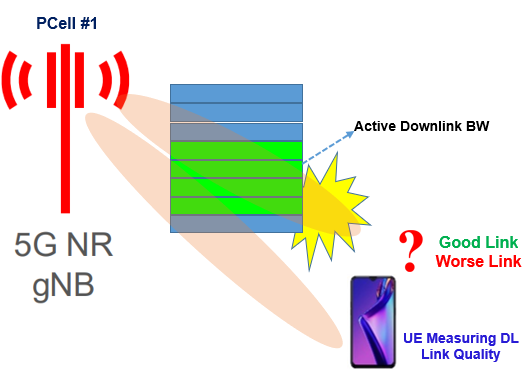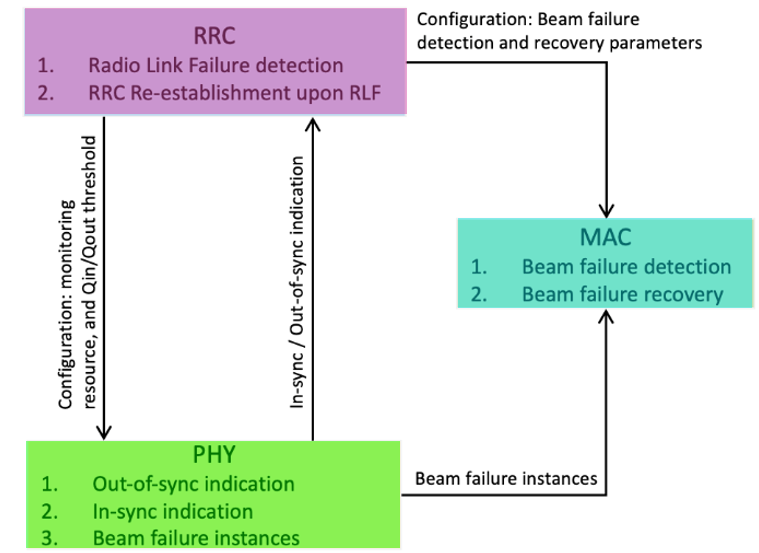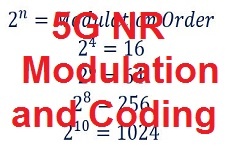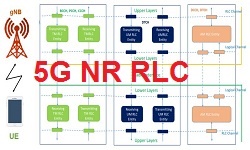Radio Link Monitoring in 5G | 5G Radio Link Failure | RLM
Introduction
When a UE is connected to the network, it requires to continuously monitor the Radio link for reliable communication, the process is know as Radio Link Monitoring (RLM). The UE monitor’s the downlink link quality based on the reference signal to measure the downlink radio link quality for the serving cell.

In 5G NR, Radio Link Monitoring is applicable for both Standalone (SA) and Non-standalone (NSA) architecture. UE performs RLM on active DL BWP of the Primary serving cell (PCell) of the Master Cell Group (MCG). If the UE is configured with a Secondary Cell Group (SCG), then the UE also monitors downlink radio link quality on the active DL BWP of the Primary SCG Cell (PSCell)
- UE monitoring PCell in SA NR, NR-DC and NE-DC operation mode
- It monitor PSCell in NR-DC and EN-DC operation mode
Layers involved in Radio Link Monitoring
Physical Layer, MAC Layer and RRC Layers on UE are involved in Radio Link Monitoring procedure.
- Physical layer: Monitors the downlink radio link quality, sends measurement results to upper layers
- MAC layer: Beam failure detection and recovery
- RRC layer: Configure PHY and MAC layer, radio link failure detection and RRC-establishment

Radio Link Monitoring Resources
UE monitor’s the downlink radio link quality based on the reference signal configured as RLM-RS resources to detect the downlink radio link quality of the PCell and PSCell in 5G NR. When no RLM-RS resources are configured then, the UE will monitor the current SSB for the downlink radio link quality.
The network can configure below RLM-RS resources
- SS/PBCH Blocks (SSB), or
- Channel State Information Reference Signals (CSI-RS), or
- Combination of SSB and CSI-RS
The UE is provided either a CSI-RS resource configuration index, by csi-RS-Index, or a SS/PBCH block index, by ssb-Index.
How to decide a Good or Worse Radio Link?
When a UE monitors the reference signals RLM-RS as configured by the network, it needs to determine whether the quality of the measured signal is good or worse. So a criteria or threshold definition is required to determine when the signal is above the worse threshold and when it is below the worse threshold.
3GPP specification has defined two thresholds for entry and exit criteria when a UE can declare radio link failure and when it can exit the RLF. The same thresholds are defined for 4G LTE and 5G-NR, but the reference signals measured for RLM are different in LTE and NR.
In LTE, UE measures the CRS for radio link monitoring, whereas in NR UE measures either the SSB or CSI-RS (when configured).
-
- Threshold Qout: It is defined as the level at which the downlink radio link cannot be reliably received and shall correspond to out-of-sync block error rate (BLERout) which is the 10% block error rate of a hypothetical PDCCH transmission
- Threshold Qin: It is defined as the level at which the downlink radio link quality can be significantly more reliably received than at Qout and shall correspond to in-sync block error rate (BLERin) which is 2% block error rate of a hypothetical PDCCH transmission
The out-of-sync block error rate (BLERout) and in-sync block error rate (BLERin) are determined from the gNodeB configuration via parameter IE name rlmInSyncOutOfSyncThreshold signaled to the UE via RRC message.
When UE is not configured with rlmInSyncOutOfSyncThreshold in the RRC message from the gNodeB , it determines out-of-sync and in-sync block error rates from Configuration #0 from the below table.

No. of RLM-RS for UE Radio Link Monitoring
The no. of RLM-RS, UE that needs to monitor per frequency range (FRs) because the no. of SSB varies per frequency range. UE shall be able to monitor up to N-RLM RLM-RS resources of the same or different types in each corresponding carrier frequency range, depending on a maximum number Lmax of SSBs per half frame.

Radio Link Monitoring Period
- In non-DRX mode operation, the physical layer in the UE assesses once per indication period the radio link quality, evaluated over the previous time period against thresholds (Qout and Qin) configured by rlmInSyncOutOfSyncThreshold. The UE determines the indication period as the maximum between the shortest periodicity for radio link monitoring resources and 10 msec.
- In DRX mode operation, the physical layer in the UE assesses once per indication period the radio link quality, evaluated over the previous time period against thresholds (Qout and Qin) provided by rlmInSyncOutOfSyncThreshold. The UE determines the indication period as the maximum between the shortest periodicity for radio link monitoring resources and the DRX period.
References:
- 3GPP TS 38.213: 5G NR, Physical layer procedures for control
- 3GPP TS 38.321: 5G NR, Medium Access Control (MAC) protocol specification
- 3GPP TS 38.331: 5G NR, Radio Resource Control (RRC)
Related Posts:
- 5G NR Beam Failure Recovery – BFR
- 5G NR RRC State Transitions
- 5G NR RRC Timers, Counter and Constants
- 5G NR SCG Failure and Radio Link Failure
- SSB Based and CSI-RS Based RLM in 5G



